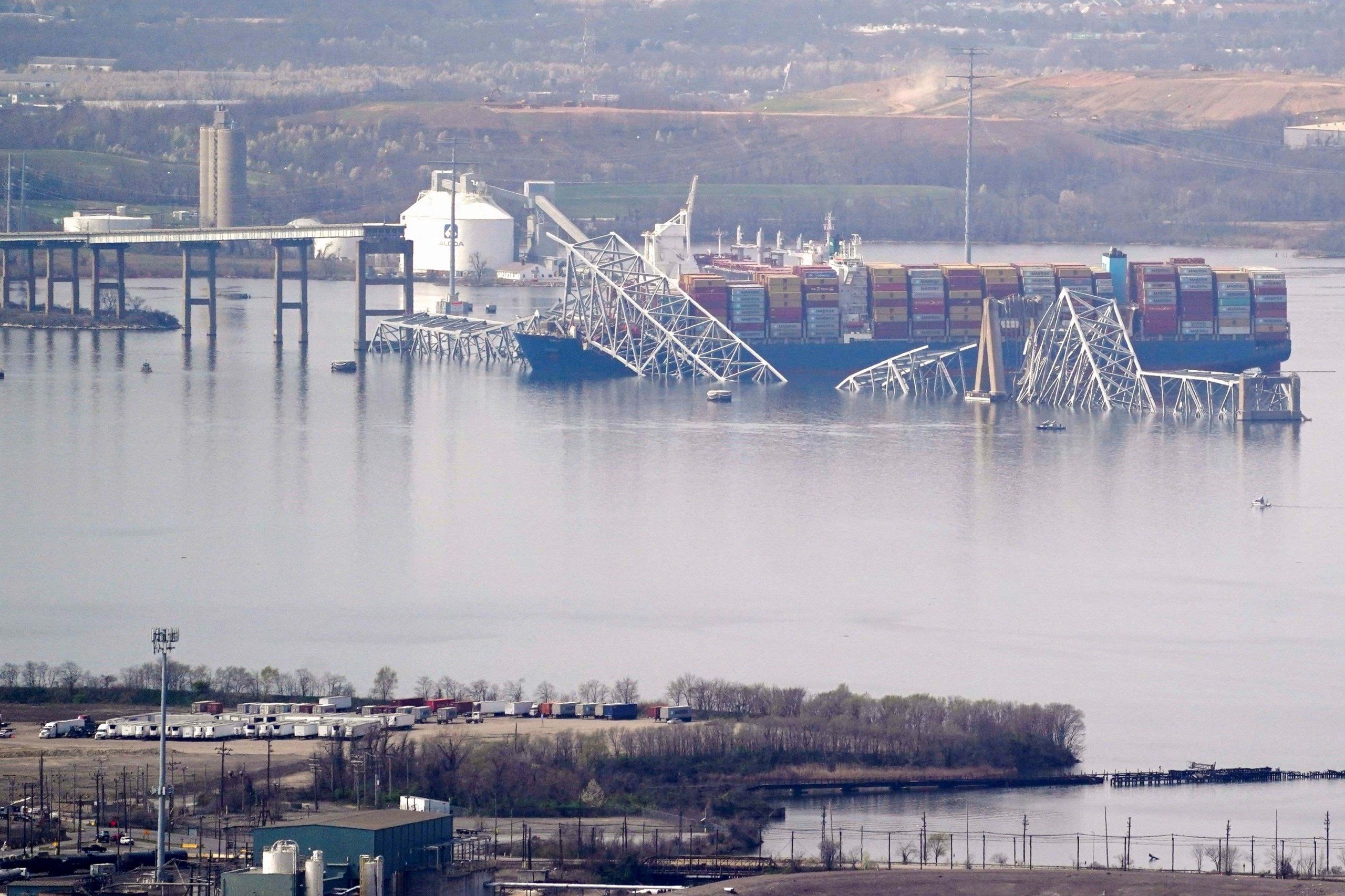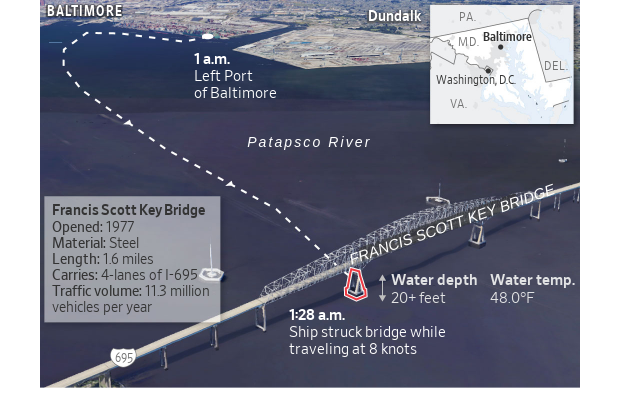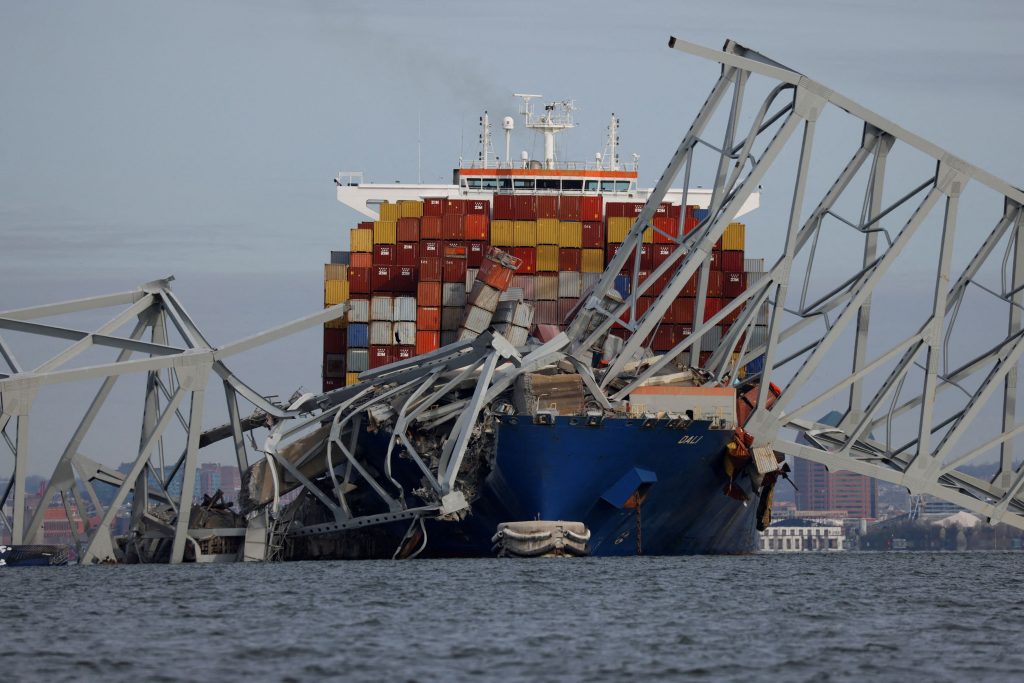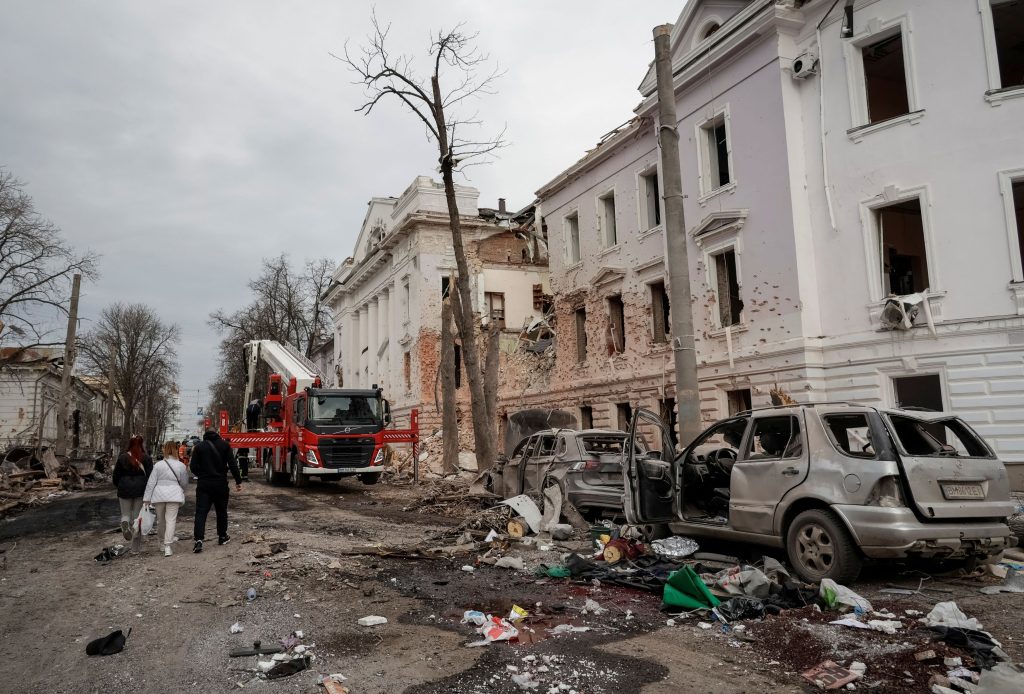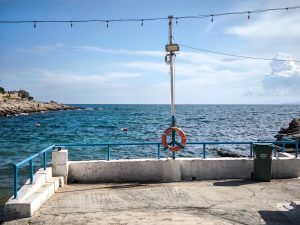BALTIMORE—A large containership plowed into a vital Baltimore bridge, leading to a search for six people who were unaccounted for after a collapse that disrupted one of America’s busiest ports.
The Singaporean ship, called the Dali, lost propulsion as it was leaving a nearby port, according to an unclassified report from the U.S. Cybersecurity and Infrastructure Security Agency reviewed by The Wall Street Journal. The Dali struck the Francis Scott Key Bridge, severing part of Interstate 695.
Lights on the vessel can be seen going dark, coming on, then going out again just before the vessel hit a bridge support column at about 1:30 a.m. ET.
The impact appeared to be an accident after the crew warned authorities of a power issue on board, Maryland Gov. Wes Moore said. Federal officials said there was no evidence of terrorism.
“This morning our state is in shock,” Moore said, while adding that the immediate focus was on search and rescue operations.
Officials said Tuesday that they were still searching for six people. One person had been rescued and is in the hospital, and another wasn’t hospitalized, said Paul Wiedefeld , Maryland’s transportation secretary. Those affected were connected to a construction crew filling potholes when the ship struck the bridge, he said.
Video from the incident shows the ship slamming into one of the bridge’s support pillars and the structure completely collapsing into the river. The governor said the ship’s mayday warning helped officials stop cars from going over the bridge. He also said it would take a “long term build” to replace the bridge.
A view of the Dali cargo vessel which crashed into the Francis Scott Key Bridge causing it to collapse in Baltimore, Maryland, U.S., March 26, 2024. REUTERS/Julia Nikhinson
“The vessel notified MD Department of Transportation (MDOT) that they had lost control of the vessel and a collision with the bridge was possible,” CISA, the federal agency, said in its memo. “The vessel struck the bridge causing a complete collapse.”
Declaring the bridge collapse “a terrible accident,” President Biden said he intended for the federal government to pay the entire cost of reconstruction. “We’re not leaving until this job gets done,” he said, adding that he would travel to Baltimore soon.
Jesus Campos, 48 years old, works for a construction company called Brawner Builders. Campos said his colleagues were repairing potholes on the bridge when the ship struck it. Campos said he wasn’t there at the time, but knows everyone who was on the bridge, including a worker who was rescued from the water. Campos said a colleague called at 5:40 a.m. to tell him the news of the ship striking the bridge.
He added it could have been him on that bridge.
“I felt sick when they showed me the video. It hurts,” Campos said, adding that he and some other co-workers have tried calling the phones of the missing workers, but no one has responded.
The Journal called Brawner seeking comment. A person who answered the phone didn’t immediately provide one.
Brawner Builders has several active multimillion-dollar contracts with the state of Maryland, according to state records.
Multiple vehicles were on the bridge at the time of the collapse, Baltimore City Fire Chief James Wallace said. Authorities were using sonar and infrared technology to determine how many cars were in the water.
As daylight revealed the scale of the collapse, police closed roads leading up to the bridge while a parade of emergency response vehicles arrived at the scene. Among the vehicles was a truck from the nearby Kingsville Volunteer Fire Company towing two inflatable boats and a pickup truck from the Prince George’s County police emblazoned with the words “underwater recovery.”
On the bridge’s north side, drivers pulled over to snap photos of the metal wreckage draped over the vessel.
Moore declared a state of emergency Tuesday morning. “We are thankful for the brave men and women who are carrying out efforts to rescue those involved and pray for everyone’s safety,” he said in a statement.
The bridge is the entryway to the Helen Delich Bentley Port of Baltimore, the largest port in the U.S. for specialized cargo like trucks, tractors and trailers. It is also a gateway for bulk cargo like coal and petroleum products.
The bridge was last inspected in May 2021 and received a “fair” rating, according to federal data reviewed by The Journal. That means inspectors determined the bridge was essentially sound, but may have minor issues like cracks or some concrete erosion.
Some 800,000 vehicles passed through the port in 2023, moving three million tons of cargo. The collapse will have ripple effects on the port’s operations that could last for months, according to Coast Guard officials.
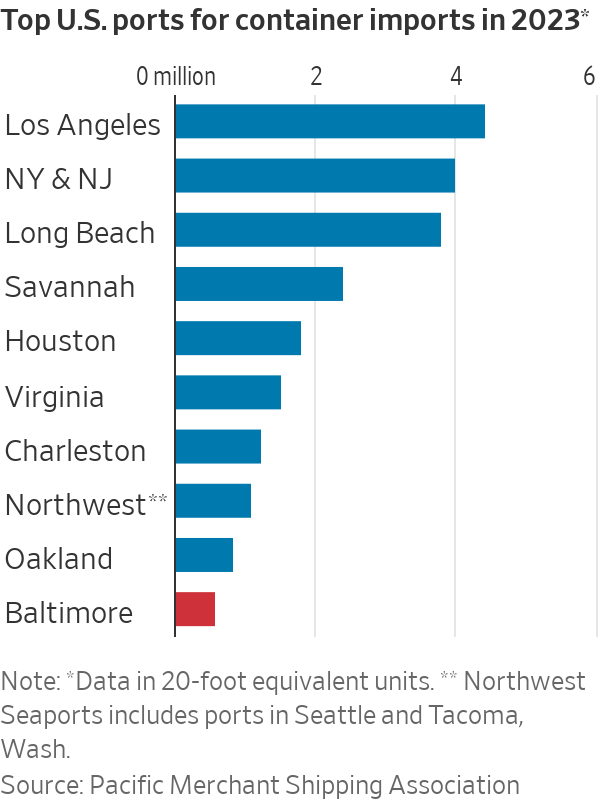
All vessel traffic in and out of the Port of Baltimore is suspended until further notice, the port said Tuesday morning. The port is still processing trucks inside its terminals, the port said.
The ship was on its way to Sri Lanka when it struck the bridge. It remained stuck under the bridge Tuesday morning with all crew still on board.
The ship is operated by the Singapore-based Synergy Marine Group, which said that the vessel had deployed its own emergency procedure and the crew was checking for casualties in the water. All of the crew are safe, the company added.
Ports in Norfolk, Va., and the New York and New Jersey area are expected to pick up most of the diverted ship traffic.
Danish container shipping giant A.P. Moller-Maersk said it had chartered the ship from Synergy. “We are horrified by what has happened in Baltimore, and our thoughts are with all of those affected,” Maersk said in a statement. “We are closely following the investigations.”
Synergy said two pilots were on the bridge to steer the ship through the crossing. Pilots are active or former captains who work at ports and take over ships as they move in and out of ports.
“The pilots take over the ship because they know the port’s tight spots like the back of their hands,” said Ioannis Sgouras, a veteran Greek captain who has sailed to Baltimore many times in recent years.
Box ships heading to Baltimore are likely to divert north to the Port of New York and New Jersey, or south to the Port of Virginia, which process many more containers each year and should be able to pick up the slack. About 21,000 standard, 20-foot containers pass in and out of Baltimore each week, said a shipbroker. New York and New Jersey handle more than 10 times that volume.
Specialized supply chains could experience more disruption. The Domino sugar refinery, owned by ASR Group and located in the port, is one of the country’s biggest, churning raw sugar imported into Baltimore from overseas into refined sugar to be consumed in the U.S. An ASR spokesperson didn’t immediately respond to a request for comment.
The port administration says Baltimore is the biggest port on the East Coast for handling “ro-ro,” short for roll-on-roll off and encompassing cargoes of autos, trucks, tractors and wheeled cranes. Coal, liquefied-natural gas and waste paper have ranked among the top exports from the port in recent years, while vehicles, salt, gypsum and sugar have been the biggest imports.
The main span of the bridge, which was built in 1977 and is locally referred to as the Key Bridge, is roughly 1,200 feet, making it one of the longest continuous trusses in the world, according to the State of Maryland website.
The bridge itself spans a total of 1.6 miles, but the overall structure including its approaches covers almost 11 miles.
Write to Gareth Vipers at gareth.vipers@wsj.com , Costas Paris at costas.paris@wsj.com , Jon Kamp at Jon.Kamp@wsj.com and Paul Kiernan at paul.kiernan@wsj.com
